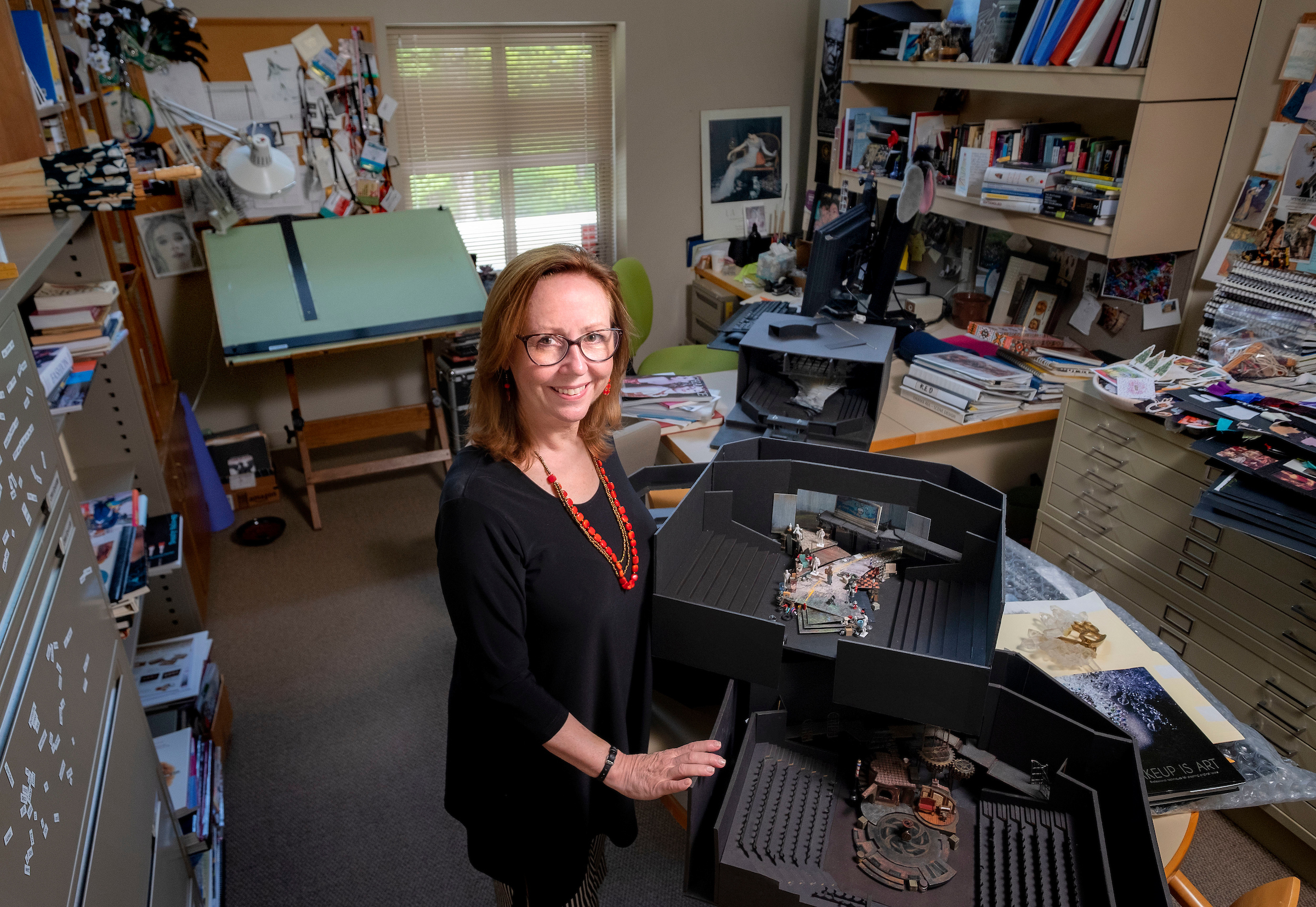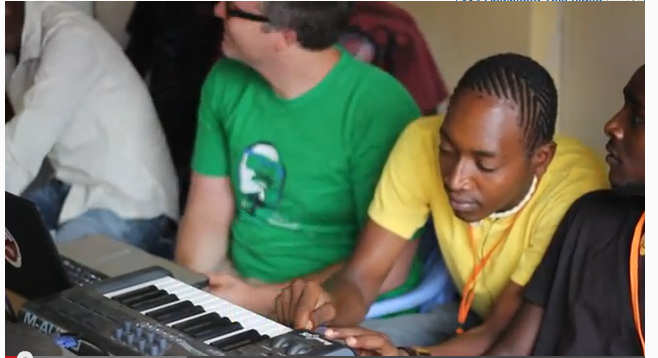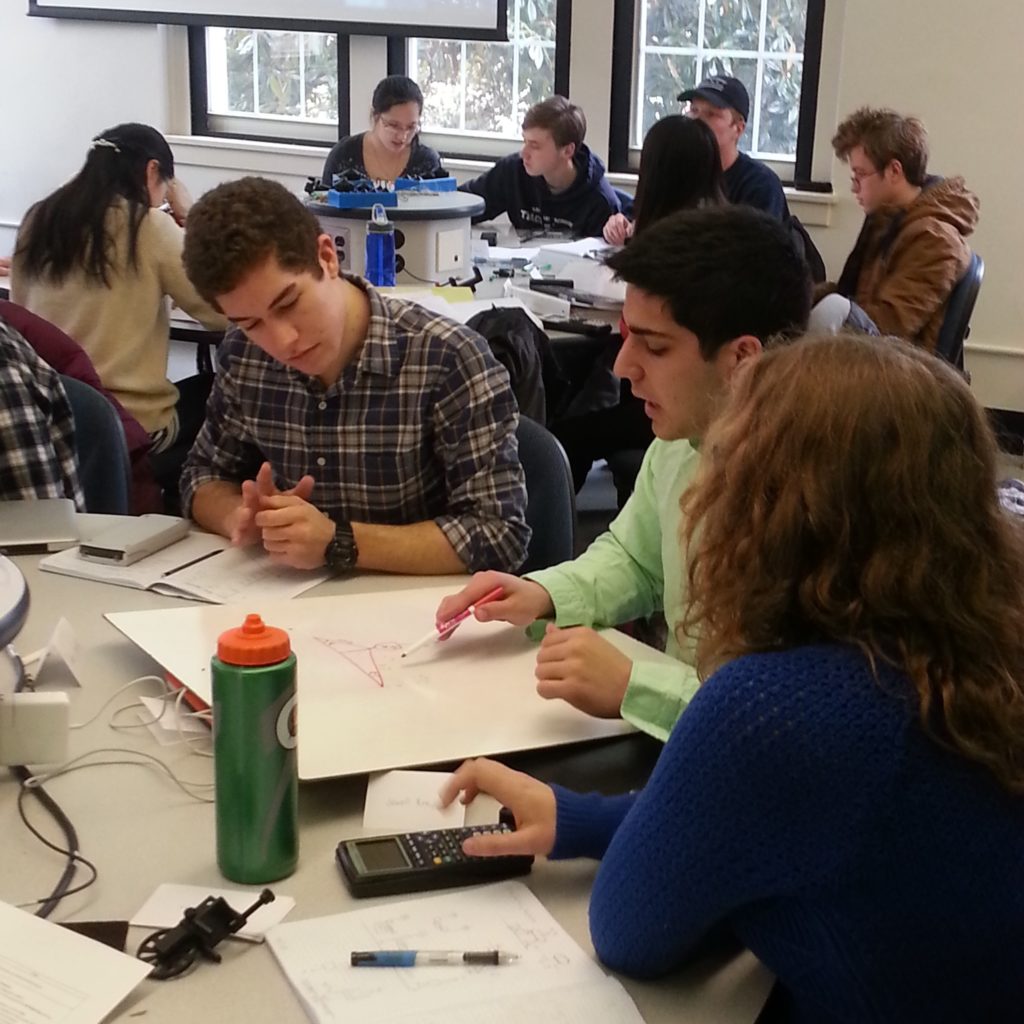
What’s a typical day like in your job?
Most of the faculty in the Department of Dramatic Art are also company members with PlayMakers Repertory Company. We teach graduate and undergraduate students and work professionally with PlayMakers. I usually design a couple of shows a year. This year I designed the sets for The Cake in the fall and Leaving Eden in the spring. As a set designer, I conceptualize and design the space and environment that the play takes place in then work with the shops, who make the design ideas come to life onstage.
How does your work support Carolina’s mission?
As a designer, I’m part of a creative team that explores contemporary issues through the lens of dramatic storytelling. This exploration often asks as many questions as it answers, helping to crack apart presumed notions of identity, relationships and social structure and offering up to the audience, the Carolina community, an opportunity to consider these questions in new ways. PlayMakers and the Department of Dramatic Art offer apprentice-like positions for undergraduates interested in mentorship from theater professionals, something not found in most theater departments. My assistant for Leaving Eden, Adam Swez, had taken my scene design class last year.
What do you like most about your work?
The opportunity to collaboratively create worlds onstage that have never before existed. It doesn’t matter if it is conceptualizing a new piece or newly envisioning an old, the journey together is everything.
How did you get interested in set design?
I was an art major in college. I was always interested in theater; I put on plays in my backyard as a child, and I stayed interested in it in high school. Everyone, including myself, tends to start out as an actor and then pursue other avenues, like set design. When I was an art student as an undergraduate, I had friends who were in opera theater and after working with them, I decided—kind of at the last minute—to go to graduate school in theater design.
What steps do you take when designing a set?
The first step is usually to read the play. Then the director and the creative team talk through ideas we have for our particular production. We’ll develop our point of view and refine ideas over a few months’ time. I’ll make sketches and revise, often several times, before drafting plans and elevations on the computer and making a three-dimensional model of the design in quarter-inch scale, which shows the scene shop what the full-scale set should look like. The scale model then goes into rehearsal with the directors and actors, so they can visualize the set.
Courtesy of the University Gazette




